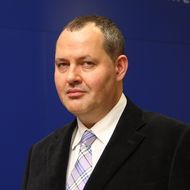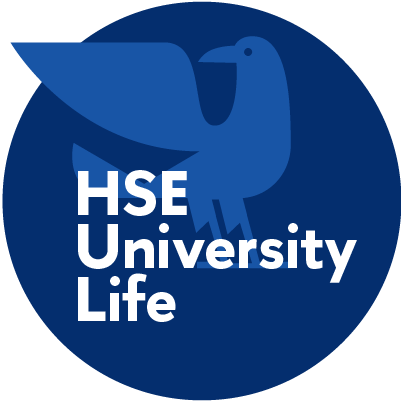- A
- A
- A
- ABC
- ABC
- ABC
- А
- А
- А
- А
- А
HSE Students Are Getting Better Grades
© Daniil Prokofyev/ HSE University
HSE students’ average grades are growing steadily, with the share of ‘nines’ and ‘tens’ reaching nearly 40%. However, apart from students’ higher performance, this may also reflect certain systemic problems. The issue of grade inflation was recently discussed by the Rector’s Council, and the HSE Administration has suggested that faculties and the Student Council work out a joint solution to the problem.
The average grade of all HSE campuses has grown considerably in recent years. It was 6.8 in the 2014—2015 academic year, rising to 7.56 during the first three modules of the current year.
The university administration took note of the trend and examined the situation in greater detail, analysing the distribution of grades. Their analysis was carried out based on almost 900,000 grades given to students since September 1, 2019. Although with such big data the distribution of grades should peak in the middle of the scale, the actual peak appears to be at the top of the grading scale.
Given that the number of students has increased by more than 70% and many new programmes have launched since 2014, this trend is certainly a cause for concern. It is true that the overall quality of admitted students has improved, and many students entering the university have won Olympiads or completed specialized schools; this facilitates their studies at the university. However, more ambitious goals and more demanding requirements can and should be set for brighter students. Both the new programmes and the new teachers at HSE University should be warned against celebrating any early victories.

While not universal, another problem is still quite common. Up to 20% of teachers find it appropriate to give top grades to three-quarters of students, and up to 10% of teachers give ‘nines’ and ‘tens’ to 90% of students. Notably, if translated into the 5-point grading system, this would mean 5+ and 5++ [equivalent to A+ and A++ in the letter grading system]. In fact, exams are becoming pass/fail tests. This suggests weakness in teacher performance and drawbacks of the grading system rather than stronger performance by students.
The university administration believes that grade inflation is a big problem primarily for the top students who invest a great deal of effort in studying a subject that they’re really interested in. If everyone turns out to be ‘A students’, the educational creativity of those students isn’t properly recognized.
Other unpleasant situations occur from time to time. Some teachers tend to inflate grades, which may be interpreted as an attempt to conceal their own lack of commitment to students’ learning and performance or to take the responsibility off their plates. When entering HSE University, students are prepared to work hard and conscientiously, but teachers in some subjects grade them more leniently.
HSE Rector Yaroslav Kuzminov has requested that all faculties join with the Student Council to analyse the statistics of each educational programme and assess teachers’ grading practices.
He warned the deans and heads of schools and departments against rushing into drastic changes and intervening in the teaching process. Mr. Kuzminov emphasized the need for a detailed and thorough discussion of the problem that takes into account the traditions and specific nature of each department.
Once the relevant data are collected and studied, a situation analysis and possible solutions are expected to be presented at the Academic Council in June.

Yaroslav Kuzminov
HSE Rector
Grade inflation is a real disease which has to be treated. This is what we did 15 years ago. Although there is nothing fatal in it and I don’t think we are too seriously ill, the entire approach to the problem requires further analysis.
Giving ‘nines’ and ‘tens’ to almost everyone reduces the incentive for bright students to excel and learn something outside the required programme. I believe it would be a huge mistake if we supported the notion that teachers can only include exam questions that cover what they specifically covered in lectures. This is more like a secondary-school approach, which is not appropriate for a university. Students must realize that a considerable part of what is expected from them is not memorizing what the teacher tells them, but the result of their own effort that they put into studying. Traditionally, HSE University has three types of A grades: 8, 9, and 10. Students who have conscientiously learned the required amount of information deserve an A, but it should be an 8 rather than 9 or 10.

Sergey Roshchin
HSE Vice Rector
Growth in the university’s average grade has been observed since the mid-2010s. The process was rather gradual, but by the last year, the situation had become more than obvious.
If we look at grade distribution statistics over the past two years, we see that the number of A’s exceeds 50%, with a small percentage of B’s and only a tiny fraction of C’s. The most prominent indicator is the average grade for research seminars. For instance, over 60% of students were awarded A grades at the Moscow campus. As a teacher, I can say that this is due to the absence of a relevant grading system. It is highly unlikely that all future bachelors will become outstanding scholars.

Vadim Radaev
HSE Vice Rector
The materials prepared by my colleagues show that we have a serious systemic problem. It is truly shocking to know that the average number of ‘nines’ and ‘tens’ is now closer to 40%.
We are now running a selective Competition for Faculty Positions. We have analysed the profiles of teachers participating in this competition, and it appears that as much as 10%—32 people out of 330—give ‘nines’ and ‘tens’ in more than 80% of cases.
Is ten percent a lot or a little? In my opinion, it is a lot. We assume that teachers’ work implies academic autonomy, including in case of awarding grades. However, this does not mean the absence of rules or responsibilities. Rules do exist.
Each of us is a practicing teacher. Personally, I teach all year round. Our responsibility is to provide an adequate and differentiated assessment of students’ performance. This does not mean we should either inflate or deflate grades. Giving only ‘nines’ and ‘tens’ is the same as giving only ‘threes’ and ‘twos’.

Grigory Kantorovich
Head of the Laboratory for Macro-Structural Modeling of the Russian Economy
The situation with grade inflation varies from faculty to faculty, so it should be addressed on a case-by-case basis. For instance, the situation in the International College of Economics and Finance (ICEF) is better than in most departments. This is because ICEF performs a separate grade analysis after each exam period and for each subject. The Academic Programmes Council deals with tracking and solving such problems as they arise.
Different universities have different positions, courses, and requirements. Therefore, I believe it is too early to introduce grading standards. Nevertheless, each teacher should understand that all A’s on an exam is a bad sign since it indicates that the teacher should have included some more difficult questions and toughened the exam requirements. However, this doesn’t mean that the teacher should have given F’s to everyone either.
Do you remember how long it takes us to assess an article? How many times it has to be refined and elaborated before it can finally be published? It is too hard now to prescribe a certain standard curve. Every course requires analysis, and teachers should be toughening exam requirements.

Sergey Pekarski
Dean of the HSE Faculty of Economic Sciences
As mentioned above, the Faculty of Economic Sciences is on the other pole of the problem (we usually give less than 10% A’s). However, I share my colleagues’ concern about grade inflation, and I find this trend rather alarming. The important question I’m asking myself is why this is happening.
My hypothesis is as follows: students put certain pressure on teachers. Student rankings play an important role, and in fact, a position in the ranking displaces a real motivation for learning. Even when they are still in school, future university students get used to the fact that they need to learn how to solve standard tasks and take sample tests. Thus, they develop an attitude which determines their future behaviour—they are not required to develop genuine competencies, they are just drilled for tests.

